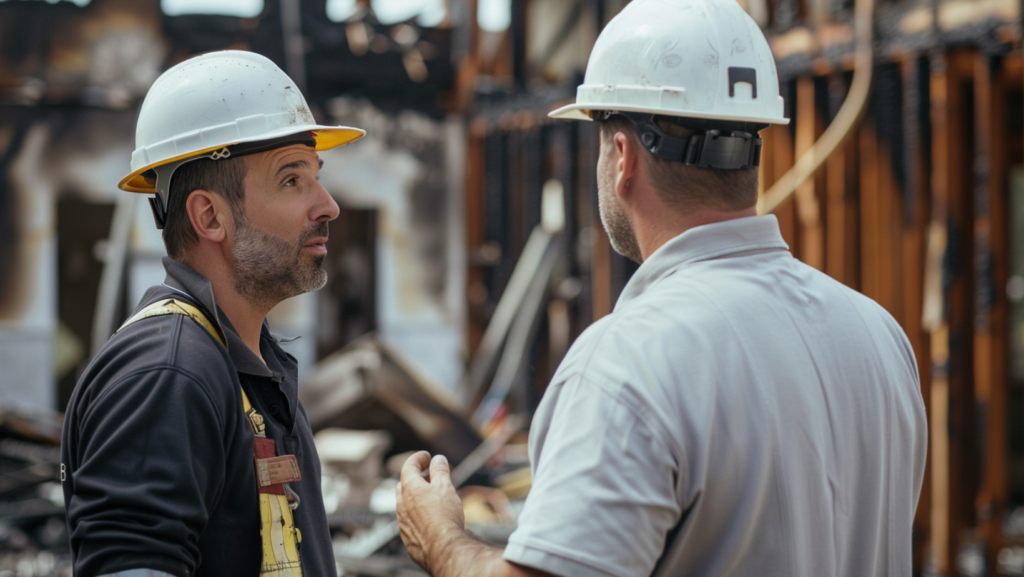Elevating Well-Being: Strategies for Disaster Restoration Leaders and Their Teams
Posted March 20, 2024
When it comes to disaster restoration, leaders and their teams face certain challenges that extend beyond the physical demands of the job. The unpredictable hours, the emotional toll of disaster recovery, and the necessity for rapid, effective decision-making all contribute to a high-stress environment. It’s essential to recognize the stressors unique to this industry and to adopt strategies that support sustained performance and job satisfaction.
Recognizing the Unique Stressors in Disaster Restoration
Disaster restoration work is inherently high-pressure. Professionals in this field often deal with emergencies, working long hours to restore properties and lives. The unpredictability and physical demands of the job, combined with the emotional weight of helping those in crisis, can significantly impact one’s health. Understanding these unique stressors is the first step toward mitigating their effects.
This strenuous environment can leave even the most seasoned restoration professionals vulnerable to fatigue. Signs of such weariness include a reluctance to start the workday, consistent exhaustion, a lack of enthusiasm, and feelings of disengagement. These indicators should not be taken lightly, as they can significantly affect a team’s effectiveness and morale.
Leadership Wellness: Setting the Tone for a Healthy Team
Leaders in restoration carry the responsibility of setting health and wellness standards. By addressing their own well-being and staying attuned to the warning signs of burnout, they can prevent the adverse effects from trickling down to their teams. Practical steps for leaders include effective time management to avoid fatigue, adopting stress-relief techniques such as mindfulness or exercise, and striving for a work-life balance that rejuvenates rather than drains.
A leader’s example can be powerful; when they showcase healthy habits, it sends a message that the organization cares not just about the work but also about the people doing it. Observing and understanding team dynamics, including body language and communication, can reveal the unspoken stresses team members may be experiencing. Recognizing and addressing these signs head-on can foster a sustainable work culture that thrives even during challenging times.
Building a Culture of Wellness in Your Team
Creating a supportive and health-conscious work environment goes a long way in promoting overall team wellness. Regular health and safety training ensures that team members are equipped with the knowledge to avoid workplace injuries. Fostering an open environment where discussions about mental health are encouraged can also destigmatize seeking help when needed. Additionally, team wellness activities can serve as a bonding experience, strengthening team cohesion and promoting a collective focus on health.
During the more challenging times, consistent communication of the company’s mission and values is crucial, ensuring that the entire team is united in their efforts toward a shared vision. This clarity can boost motivation where it may have been lacking. By proactively supporting and checking in on employees, leaders not only show they value their team but also reinforce a sense of togetherness. It’s important for leaders to make deliberate efforts to connect with and update their team members, especially when their energy levels seem low.
Physical Health and Safety: Beyond the Basics
Safety is paramount in property restoration as the job can be physically taxing. Beyond adhering to basic safety protocols, it’s crucial to implement advanced measures tailored to specific restoration activities. Emphasizing ergonomics and injury prevention helps safeguard the team against common physical ailments. Nutrition and hydration advice can also be invaluable, ensuring that team members have the energy and stamina required for their tasks.
Focusing on Mental Wellness in the Workplace
The mental health of restoration professionals is as crucial as their physical health. Leaders should be vigilant in recognizing signs of burnout and stress among their team members. Providing access to professional counseling and organizing stress management workshops can offer much-needed support. Team-building activities aimed at enhancing resilience can also equip team members with the tools to handle stress more effectively.
Conclusion
The demanding nature of disaster restoration work necessitates a strong focus on health and well-being. By understanding the unique stressors of the industry, addressing leadership wellness, and fostering a culture of health and safety, leaders can support their teams in achieving both professional success and personal well-being. In doing so, they not only enhance the quality of their service but also contribute to a more resilient and healthy work environment.
The well-being of each team member forms the foundation of success. It’s through the collective health and resilience of the team that the industry can continue to respond effectively to the challenges it faces, making a positive impact on the communities it serves.

